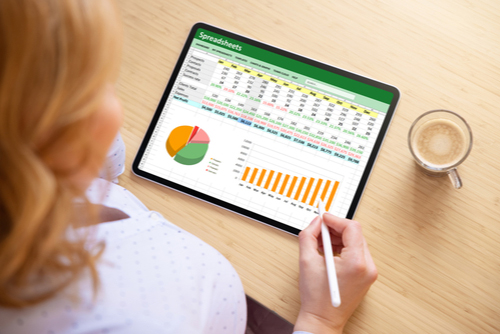Microsoft Excel, a modest spreadsheet application launched in 1985. The basics of Excel back then is that it was a spreadsheet system which organizes data in columns and rows that can be manipulated through mathematical formulas and functions that the software can perform. Its popularity and performance continued into the mid-1990s where later versions of the software introduced updates such as toolbars, outlining, drawing, charts, more automated features, and the ability that allowed users to recover excel data in the event of a computer crash.
Excel saw another significant upgrade in 2007 when they focused on redesigning the user interface. This allowed sharing features with other Microsoft products allowing users to move seamlessly between the applications. They also included updates such as chart making, data sharing, security updates, formula writing, sorting, and filtering.
Present day Excel is the most familiar, flexible, and still most popular Microsoft business applications because it can be used for any type of business and industry. As Excel has proven to stay updated with the times, its newest features make remote work an easy transition while maintaining data integrity and accuracy, proving it still is a critical tool in 2022.
The Latest Features To Look Out For
All these features are in Excel 2021 and Excel LTSC for both Windows and Mac
Excel has proved that it is no stranger to change and just like all Microsoft Office products, it has stayed up to date with the software and the following features place emphasis on collaborating and functionality.
Effective Collaboration
Excel has introduced new features to make collaborating on a workbook easier than ever. They have introduced co-authoring which is when you and your coworkers can work on the same Excel workbook, you can see changes, have more control of commenting and can see who is working on the same workbook as you. These new collaboration features are extremely important for any organizations who have implemented remote work practices because it ensures all employees have access to the most up-to-date data and information regardless of location.

LET Function
The LET Function, accomplished through Excel’s original formula syntax, is used for assigning names to calculation results which in turn allows storing intermediate calculations, values or defining names inside of a formula. This function is used by defending pairs of names with associated values and calculation that uses them all. This function helps improve performance by calculating the same expression once instead of multiple times and allows for easier reading and composition for user and the consumer.
Dynamic Arrays
One of the most significant changes Excel implemented in 2021 was dynamic arrays. This function is crucial because it gives users the ability to write one formula with a multitude of values. There are six new functions that manage arrays and the output of data into a range of cells and if any changes are made, the results are updated automatically. Below are the six inner functions and a brief description of the role they play:
- UNIQUE – extracts unique items from a selected range of cells
- FILTER – filters data based on the specific criteria and returns matching records
- SORT – sorts a range of cells by a specified column
- SORTBY – sorts a range of cells by another specified range or array
- RANDARRAY – generates an array of random numbers
- SEQUENCES – generates a list of sequential numbers
These functions also help with traditionally tougher tasks such as removing duplicates, extracting, and counting unique values, filter out blanks, generate random integers and decimal numbers and more. Utilizing these functions help excel users be more productive, gather more accurate data, minimize mistakes, and improve overall efficiency.
XMATCH
A more vertical MATCH function that works effectively with dynamic arrays, the XMATCH function searches for a specified item in a range of cells and returns a position in vertical or horizontal ranges. XMATCH can support approximate matching, reverse searching and partial matching. The MATCH function has always been popular in Excel for finance, but XMATCH is a more versatile and significantly easier version to use.
XLOOKUP
Similar to XMATCH, XLOOKUP is a more modern version of older Excel functions such as VLOOKUP, HLOOKUP and LOOKUP. This function can find items in a specified array by row and supports approximate matching, partial matching, and lookups in vertical and horizontal ranges.
Overall User Experience
Excel really took user feedback into consideration and added plenty of user-friendly features. Users now can get faster calculations, unhide multiple sheets at the same time, support OpenDocument format (ODF) 1.3, and now offers workbook statistics which is a quick overview of how large your workbook is. On the more creative side, they updated their draw tab with additions such as point eraser, ruler, and lasso, added a new input field for the colors dialog, and now offer sketched outline styles which will determine the color, thickness, and style of the outside border of a textbox or shape.

Utilizing Excel and other Microsoft Office applications will always be a benefit to any organization. It is important to stay current with updates and begin using new features when available to provide the best user experience for everyone while keeping data and valuable information accessible, accurate and easy to manage.


